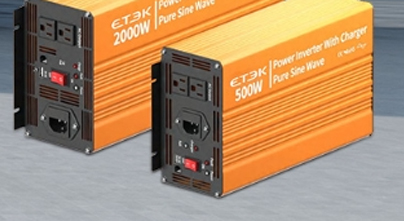Introduction
Power inverters are essential devices for converting direct current (DC) to alternating current (AC). Among the various types available, modified sine wave and pure sine wave power inverters are two commonly used options. Understanding the differences between them is crucial for choosing the right inverter to meet specific power needs.

Waveform Characteristics
A. Pure Sine Wave
A pure sine wave inverter generates an AC waveform that is identical to the sinusoidal waveform provided by the utility grid. It is a smooth and continuous oscillation, with a precisely defined frequency (usually 50 or 60 Hz) and amplitude.
This waveform is ideal for powering sensitive electronic devices as it closely mimics the natural power supply they are designed to operate with.
B. Modified Sine Wave
A modified sine wave inverter produces a waveform that approximates a sine wave but has a stepped or square-like appearance. It consists of a series of positive and negative pulses that are combined to create an approximation of the sinusoidal shape.
The waveform is less smooth compared to the pure sine wave, and the transitions between the positive and negative portions are not as gradual.
Compatibility with Electrical Devices
A. Pure Sine Wave
Sensitive electronics such as computers, laptops, tablets, televisions, and audio/video equipment function optimally with pure sine wave power. These devices have power supplies that are calibrated to work with the pure sine wave, and using a pure sine wave inverter helps prevent issues like overheating, reduced performance, and potential damage to internal components.
Medical equipment, including CPAP machines, dialysis machines, and certain laboratory instruments, require the clean and stable power provided by a pure sine wave inverter to ensure accurate operation and reliable results.
B. Modified Sine Wave
Many basic electrical appliances like incandescent light bulbs, simple power tools (such as drills and saws), and some small kitchen appliances (like toasters and coffee makers) can operate with a modified sine wave inverter. However, they may experience some inefficiencies, such as slightly reduced heating or motor performance.
Sensitive electronics and some motor-driven appliances with advanced electronics (such as variable speed motors) may not function properly or may even be damaged when powered by a modified sine wave inverter. The non-ideal waveform can cause electrical noise and interference, leading to erratic behavior or premature failure of these devices.
Power Quality and Efficiency
A. Pure Sine Wave
The pure sine wave provides a high-quality power output with low harmonic distortion. Harmonic distortion is the presence of additional frequencies in the power signal that can cause problems such as overheating of electrical components, interference with communication systems, and reduced power factor.
Due to the clean waveform, power transfer is more efficient, and the inverter can operate at a higher power factor. This means that more of the input power is effectively delivered to the load, reducing energy losses during the conversion process.
B. Modified Sine Wave
Modified sine wave inverters generally have higher harmonic distortion compared to pure sine wave inverters. This can lead to issues such as increased heating in electrical equipment, reduced lifespan of components, and interference with other nearby electronic devices.
The efficiency of modified sine wave inverters is typically lower than that of pure sine wave inverters. The non-ideal waveform causes additional losses in the power conversion, resulting in less power being available to the connected devices for a given input power.
Cost Considerations
A. Pure Sine Wave
Pure sine wave inverters are generally more expensive to manufacture due to the more complex circuitry and control systems required to generate the precise sine wave waveform. This cost is reflected in the retail price, making them a more costly option compared to modified sine wave inverters.
However, the investment in a pure sine wave inverter may be justified for applications where high-quality power is essential, such as powering sensitive electronics or critical medical equipment, as it can prevent costly damage and ensure reliable operation.
B. Modified Sine Wave
Modified sine wave inverters are less expensive to produce, as their circuitry is relatively simpler. They are a more budget-friendly option for applications where the connected devices are less sensitive to power quality and can tolerate the stepped waveform.
For basic power needs, such as powering a few simple appliances during a camping trip or in a remote location, a modified sine wave inverter can provide a cost-effective solution without the need for the higher precision of a pure sine wave inverter.
GET A QUOTE